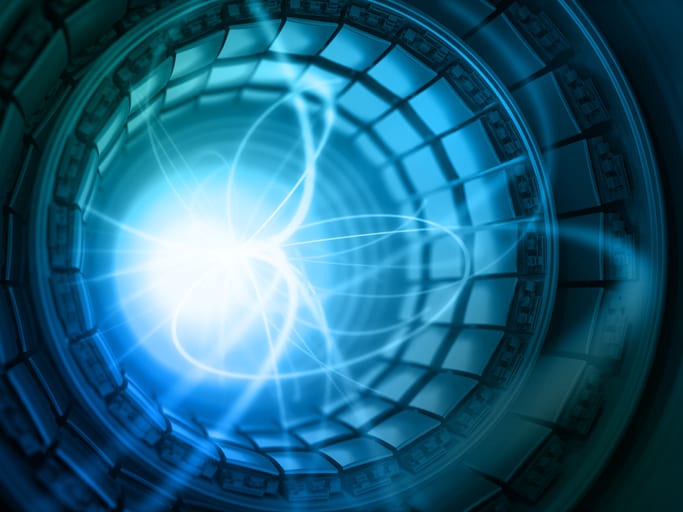The human body is totally amazing!
I’m constantly in awe when I read about it and learn how complex we really are. It’s kind of a miracle, don’t you think?
I sure do!
What are facts about the human body that a lot of people don’t know about?
AskReddit users shared their thoughts.
38. Triple threat!
“The chance of a natural pregnancy with identical triplets is 1 in 200,000,000.
My friend had identical triplets.
It was her first time making whoopie and she got pregnant with triplets. I didn’t know it was so rare.”
37. Stripes.
“Humans have stripes, we just normally can’t see them. They’re called Blaschko’s lines and form along the paths of embryonic cell migration.
The stripes are sort of U-shaped down our front, V-shaped on our back, wavy on the head and face and we have basic, simple stripes on our extremities.”
36. Smart stomachs!
“Your stomach is surrounded by more brain cells (half a billion neurons) than the brain of a cat contains in total.
It’s your enteric nervous system. It controls digestion, operates autonomously, has its own memory, can handle its own reflexes, it has its own senses even.
It’s thought to have come about because of the blood-brain barrier and the main brain being locked away in the skull, a spinal column and nerves away from the critical action of nutrition.”
35. I did not know that!
“The eyeball is the fastest healing part on your body.
Let me put it in a ‘simpler’ version if you don’t believe me. The eye ball has a cornea.
Now, cutting the cornea will result in much pain, but since this part doesn’t contain blood, but only gets a supply of oxygen, it is the only fastest healing part of your body that can heal in only 24-36 hrs.
Believe me now?”
34. Ahhhhhhh!
“X-rays of children’s mouths are nightmare fuel.
The second set of teeth to replace baby teeth are already grown and lodged in their skulls. So you’ll see two rows of teeth and its freaky looking.
They don’t grow in when the old ones fall out, they are already loaded in the chamber waiting to get launched.”
33. What?!?!
“Chickens in the eggs develop a tail and teeth, but those stops growing after some time. Its probably what’s left from the first birds, which had a long tail and teeth.
Scientists think that, with the right timing, you could make it so they dont stop growing and have a “chickenosaur” out of the egg, with small teeth in the beak and a long tail.”
32. Nuts!
“Humans are bioluminescent and glow in the dark, but the light that we emit is 1,000 times weaker than our human eyes are able to pick up.”
31. Did you hear that?
“Some women can feel the exact moment an egg is released from the ovary during ovulation.
Feels like a little pop just on one side.
Pretty neat.”
30. For a reason.
“The reason it’s so easy to break your collar bone is because its designed to break.
The way it was explained to me is that its like a circuit breaker.
It breaks there to stop the shock of impact getting to your spine.”
29. Oh, boy!
“Pineapple contains bromelaine, an enzyme that ingests proteins.
Your meat parts are mostly made of proteins, so when you’re eating pineapple, it’s also eating you.”
28. All you need.
“You don’t need those detox tea or whatever detox products your high school friend and your aunt are selling.
Your liver is all you need.”
27. Wow.
“Alzheimer’s disease isn’t just gradual loss of memory. It physically exists in the brain. It’s a physical plaque substance that attacks the brain.
Like, if you were able to open the skull of a person suffering from Alzheimer’s disease to take a look at their brain, you would actually see this sticky, fibrous, grey physical matter overtaking their brain.”
26. Keep that in mind.
“Every 7 years, every cell in your body will have completely replaced itself. Different cells divide at different rates, however.
You need a new stomach lining weekly and a new skeleton every 7 years.”
25. It’s down there.
“You have a big flab of tissue that hangs down from under your stomach which covers your intestines. It’s called the greater omentum, it’s almost always removed in any basic anatomy drawing so most people don’t know it’s existence! It stores quite a bit of fat but it carries out some unusual roles.
In an abdomen infection it sometimes can wrap itself around it, hence giving it the nickname the “policeman of the abdomen.””
24. Painful.
“95% of the sensory fibres in the human ear are used to transmit sound. Until recently, the function of the other 5% of fibres were not known.
We now know that under certain conditions, these remaining fibres can become sensitized, leading to a rare condition known as hyperacusis, where everyday sounds cause the sufferer immense pain.
It is debilitating and often leads to people giving up their careers, relationships and homes, isolating themselves indefinitely in sound-insulated rooms.
Source: I am one of these people.”
23. Interesting…
“When loosing weight, fat isn’t lost through heat, p**p or sweating. Nearly all fat is lost through simple breathing.
If you lose 10kg of fat, precisely 8.4kg comes out through your lungs and the remaining 1.6kg turns into water.”
22. I did not know that!
“Infants are born with approximately 300 bones, but as they grow some of these bones fuse together.
By the time they reach adulthood, they only have 206 bones and teeth are considered part of the skeletal system, but are not counted as bones.”
21. Bypass.
“Our bodies have the ability to perform there own bypass procedures. My grandfather went in for a scan and it showed a 100% blockage in one of his major arteries.
The image also showed a new portion of the artery starting .25” before the blockage and then rejoining the artery .25” after the blockage completely bypassing the obstructed portion.
He had never had surgery before this discovery.”
20. No one likes it.
“You don’t like the sound of your recorded voice because it’s missing the low frequency you’re used to hearing.
When you talk, you hear your voice as it goes to the air and back to you ear. It also goes through your skull to your ear, and this bone conduction mechanism transmits the low frequencies better than air does.
Your recorded voice only has the air transmitted sound. That causes the dissonance between what you think your voice sounds like, and what it really does. It’s also why your voice will (almost) always be higher pitch than you think.”
19. Not just chillin’.
“The appendix is not a vestigial organ. It actually protects good bacteria in the gut.
You can live without it, but it’s not just chillin’ in there.”
18. Full circle.
“Migraine pain can lessen from vomiting.
Vomiting can cause dehydration.
Dehydration can cause migraines.
The human body is funny.”
17. All about arteries.
“We all have a major artery called the ascending aortic artery that runs down the center of our abdomen. Another artery, called the superior mesenteric artery, branches off of that.
There is a gap between the arteries that is kept open by a pad of fat, and the start of our intestines, called the duodenum, passes right through the gap between the two arteries.
Very very rarely something can happen to shrink the fat pad, and then the arteries act like a clamp and pinch the duodenum closed. This prevents anything, solid or liquid, from passing from the stomach into the intestines.
This is called Superior Mesenteric Artery Syndrome, and I had it. It is so rare that it took 2 months of doctors excluding everything else for them to diagnose me.
I couldn’t keep anything down, and went from 120 to 90 lbs. I had to have where my intestines were connected to my stomach moved to another spot, and have about 6 feet removed in the process.
This was almost 7 years ago now. Other than having to eat more than I used to in order to maintain my weight, I’m okay. That is only one of the weird, and very rare, medical conditions that I’m living with, but you’d never know by looking at me.”
16. Uh oh.
“That the body’s ph is 7.35 to 7.45 and if any of those scam products that promise to “change the PH of your body” actually worked, you’d be d**d.”
15. Can’t see it.
“Each one of your eyes has a blind spot where the optic nerve exit your eye into your brain.
You can’t see it because your brain tricks you not to see, it covers the spot with some made up image of what it thinks fits better with the rest of it.”
14. Well, that’s odd.
“Humans are one of a few species of mammal that oddly don’t produce their own vitamin C due to lack of a certain enzyme.
Other mammalian species who exhibit this mutation are those contained in the main primate suborder Haplorhinni (monkeys, apes, tarsiers), as well as bats, capybaras, and guinea pigs.
All other mammals produce vitamin C in the liver.”
13. Only about 20%.
“Apparently about 20% of people have a bony ridge on the roof of their mouth. Most people’s palates are smooth with a very slight ridge.
The 20% like me have an exaggerated and more pronounced ridge. Apparently it’s most common in women and Asian folk, and I’m neither so that’s neat.
I always thought it was totally normal.”
12. Blood stuff.
“Positive blood type women can have positive and negative blood type babies without issue.
Negative blood type women require a shot with antibodies to prevent the mothers immune system from attacking the fetus if it is a positive blood type.”
11. It adapts.
“When you get conditioned to physical activity, your circulatory system adapts — more blood, more vessels, more blood cells. But your lungs really don’t.
This is because no matter how much blood your heart is able to deliver to your lungs, the lungs still have no problem oxygenating it.
This is why your oxygen saturation doesn’t drop during exercise (unless you have a heart defect.)”
10. Creepy.
“Your brain continues to try to revive the body long after the heart has stopped.
In some cases, there has been found brain activity trying to make repairs to bring the body back 30 hours later.
This is used to indicate time of death in m**der victims.”
9. Ouch.
“Babies can break their collarbone during delivery. It happens quite often, but heals quickly.
My teacher told me that (if it happened to you ofc) you may feel a slightly higher spot on your collarbone, called the callus where the fracture grew back together.”
8. A little bit different.
“Humans have, on average, just as many hairs on their body as chimpanzees.
Human hair is just a lot shorter and finer.”
7. The King.
“When you have a bowel movement, your heart rhythm shifts temporarily due to a vagus response.
The reason Elvis d**d on the toilet was because his heart was beating 200+ bpm and the quick rhythm change caused a myocardial infarction. People with low heart rates have been known to pass out on the toilet because their bodies can’t handle the shift.
It’s also why EMTs will absolutely not let you use the bathroom before getting on the ambulance. Especially if the bathroom is a standard 5’x8′.”
6. Amazing!
“A pregnant woman that has a mild heart attack will be healed from the baby’s stem cells, leaving virtually no tissue damage.”
5. Survival instinct.
“If you faint at the sight of your own blood you may have an oversensitive vasovagal response.
The theory is that this developed as a survival mechanism, kind of like an opossum playing d**d.”
4. I believe it.
“Humans feel less satisfaction when they don’t gain anything from an interaction.
In other words, you get less dopamine (or whatever feel good chemical) when you do something that basically has an equal cost and reward. This has lead me to believe that free food DOES really taste better.
It never made sense to me why cupcakes only tasted good when kids brought them in for their birthday. Whenever I’d buy them on my own they tasted worse. I guess it’s because my brain knows I spent money on them.”
3. Strength.
“Your brain regulates how strong your muscles are. If your leg muscles were to contract at full strength, they would snap your femur.
Its why people in emergencies on adrenaline can lift cars off children. Your body is capable of great strength, but it could also severely damage you, so your brain keeps you a weak, soft bag of jelly.”
2. You need that sleep.
“You will sooner d** from lack of sleep than lack of food.
You can live, depending on your current body fat and health level, for months without food.
Estimates are you that you will d** from lack of sleep within 2 weeks”
1. Pretty incredible.
“Your eyes have a separate immune system from the rest of your body.
On a lot of occasions if your body’s immune system finds your eyes, they will assume they are a foreign body and blind you.”
Do you know any interesting facts about the human body?
Please share them with us in the comments!
We’d love to hear from you!
The post 38 Fascinating Facts About the Human Body Most People Don’t Know appeared first on UberFacts.




























